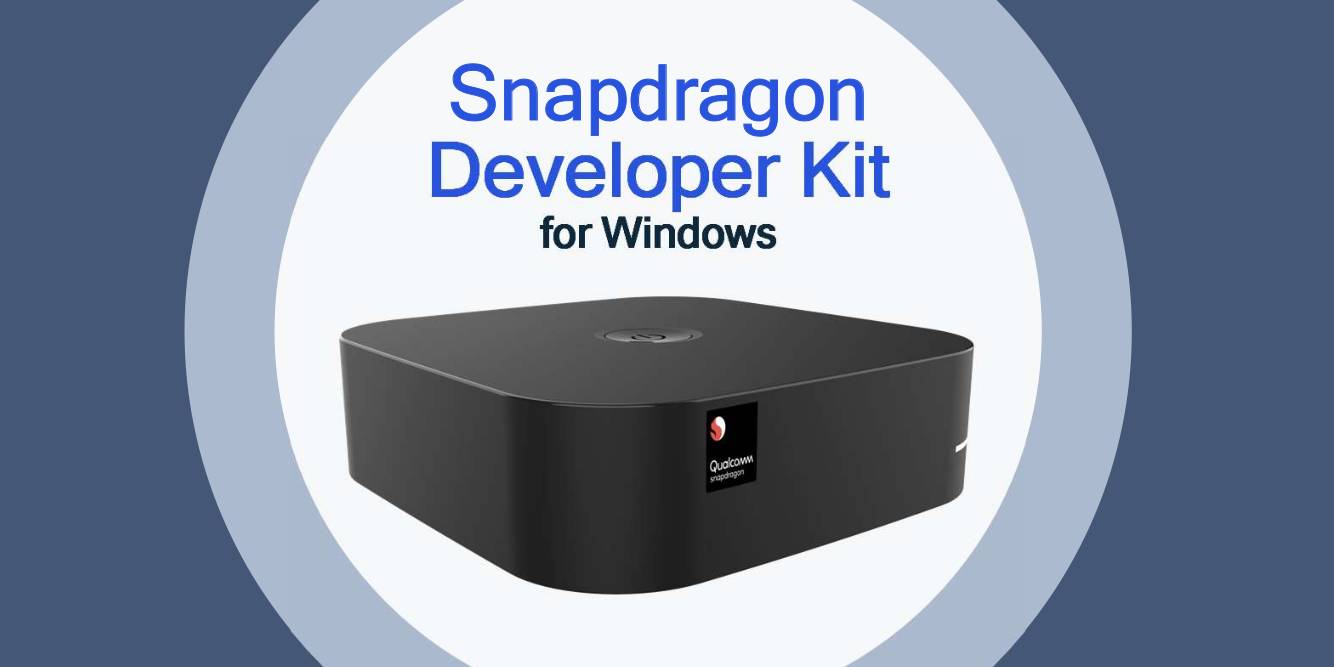Qualcomm Hopes To Attract Devs To Windows 10 On Arm With New Testbed, Spins Up 2nd-gen 7c Cheapbook Chips

For nearly a decade, Microsoft has fought to turn Windows on Arm into a viable platform for day-to-day computing. Success (not to mention anything resembling meaningful market share) has proven elusive. Users (not to mention developers) are few and far between.
In an attempt to close the app chasm, Qualcomm today introduced the Snapdragon Developer Kit – a low-cost Windows 10 PC powered by the chip designer's Arm-compatible silicon.
Qualcomm didn't say much about the internals of the Snapdragon Developer Kit. We don't know, for example, which of its system-on-chips it'll use, nor how much RAM and storage it'll contain. Presumably this will be revealed at Microsoft's Build developer conference this week.
From the outside, the Snapdragon Developer Kit resembles a small form-factor PC, not unlike the Mac Mini or an Intel NUC, with a generous amount of ports. We spotted two USB-A, one USB-C, a microSD slot, Ethernet, HDMI, and what appeared to be a SIM card slot.
We note that Apple released a similar device (the Developer Transition Kit, or DTK) last year, as it began the transition from x86 to its own Arm-compatible Apple Silicon chippery. This machine allowed developers to port existing code ahead of the commercial release of the first Arm Macs. Dev kits are part and parcel of the industry: from games consoles to embedded tech.
With a US release of the Snapdragon Developer Kit penciled for this summer and other markets soon to follow, Qualcomm's gear arrives with Arm-powered Windows PCs already in circulation. Nonetheless, there's still quite a bit of urgency.
The most common criticism of Windows on Arm is that it suffers from a dearth of apps. Microsoft has yet to properly introduce Rosetta-style emulation of x64 software, which continues to languish in Insider builds for testing pending a proper release.
This unfortunate situation has forced users to rely on the relatively few existing native Arm apps and the comparatively more plentiful 32-bit x86 apps to get stuff done.
- The three or so people who run Windows 10 on Arm might be glad to know that x64 emulation is in preview
- Microsoft is designing its own Arm-based data-center server, PC chips – report
- Microsoft updates Dev Channel Windows 10, breaks Arm x64 emulation
- Microsoft takes another shot at the Windows-on-Arm thing with a revamped Surface Pro X powered by new SQ2 silicon
Qualcomm hopes the Snapdragon Developer Kit will help remedy that situation by lowering the cost of entry for developers. In a statement, Miguel Nunes, senior director of product management, touted the machine's "affordable" (but unspecified) price point.
"This developer kit provides an affordable alternative to other consumer and commercial devices. With the smaller desktop configuration, this kit gives developers more flexibility than notebook options, and at a lower price point," he said.
Snapdragon goes to school.
Qualcomm also took the opportunity to launch its second-generation Arm-compatible Snapdragon 7c chipset, which targets entry-level mass-market devices across both Windows 10 and, for the first time, ChromeOS. The first-generation 7c was sighted at the end of 2019.
Built on an 8nm process, the Snapdragon 7c Gen 2 touts eight Kryo 468 CPU cores, with a maximum clock speed of 2.55GHz, a small increase on the first generation. That processor cluster is made up of two Arm Cortex-A76 cores, and six Cortex-A55s. Also present is the chip designer's Adreno 618 GPU, which offers support for external displays at QHD resolutions, as well as its Hexagon 692 product, which combines both DSP and NPU features.
The SoC's memory controller comes with support for two LPDDR4 RAM modules. On the storage front, there's compatibility with eMMC 5.1 and UFS 2.1. Meanwhile, the integrated cellular modem is Qualcomm's Snapdragon X15, with support for LTE and below. Given this is an entry-level chip, you can forget about 5G.
Qualcomm claimed its chip offers 60 per cent more performance per watt when compared to Intel's Celeron N4020 processor, based on the PCMark 10 benchmark. Tellingly, we note the N4020 is most commonly encountered in bargain-basement Windows and Chromebook machines, like the Lenovo IdeaPad 1i and the HP Chromebook x360.
Qualcomm said it expects the first Snapdragon 7c Gen 2 devices to hit the shelves later this summer. While it hasn't mentioned any specific models, it's likely the bulk of these machines will target the sub-$400 market, where volumes are plentiful and demand is high. The addition of Chromebook support will also allow it to wrest some market share from MediaTek, which jumped on the ChromeOS bandwagon back in 2015. ®
From Chip War To Cloud War: The Next Frontier In Global Tech Competition
The global chip war, characterized by intense competition among nations and corporations for supremacy in semiconductor ... Read more
The High Stakes Of Tech Regulation: Security Risks And Market Dynamics
The influence of tech giants in the global economy continues to grow, raising crucial questions about how to balance sec... Read more
The Tyranny Of Instagram Interiors: Why It's Time To Break Free From Algorithm-Driven Aesthetics
Instagram has become a dominant force in shaping interior design trends, offering a seemingly endless stream of inspirat... Read more
The Data Crunch In AI: Strategies For Sustainability
Exploring solutions to the imminent exhaustion of internet data for AI training.As the artificial intelligence (AI) indu... Read more
Google Abandons Four-Year Effort To Remove Cookies From Chrome Browser
After four years of dedicated effort, Google has decided to abandon its plan to remove third-party cookies from its Chro... Read more
LinkedIn Embraces AI And Gamification To Drive User Engagement And Revenue
In an effort to tackle slowing revenue growth and enhance user engagement, LinkedIn is turning to artificial intelligenc... Read more

